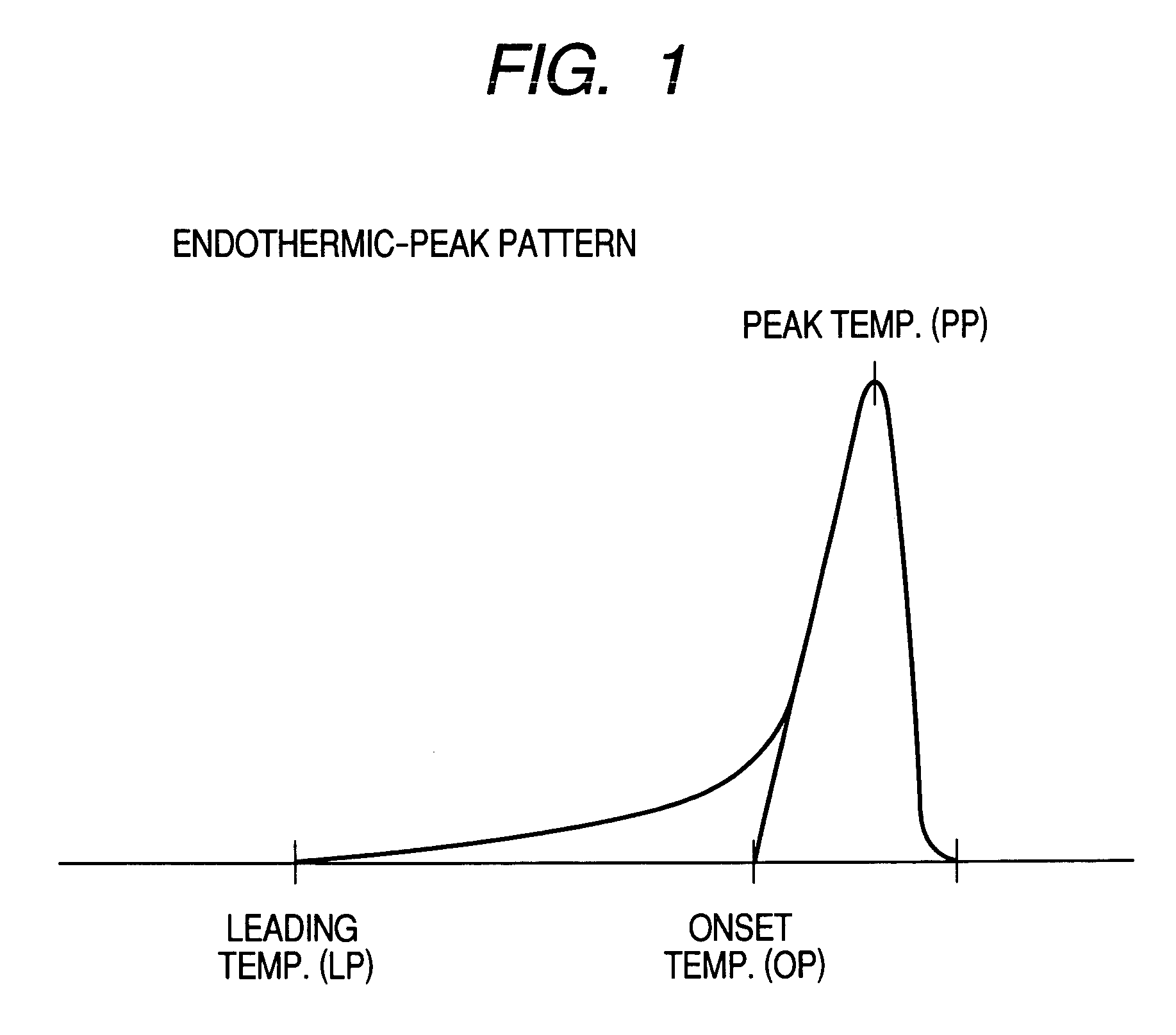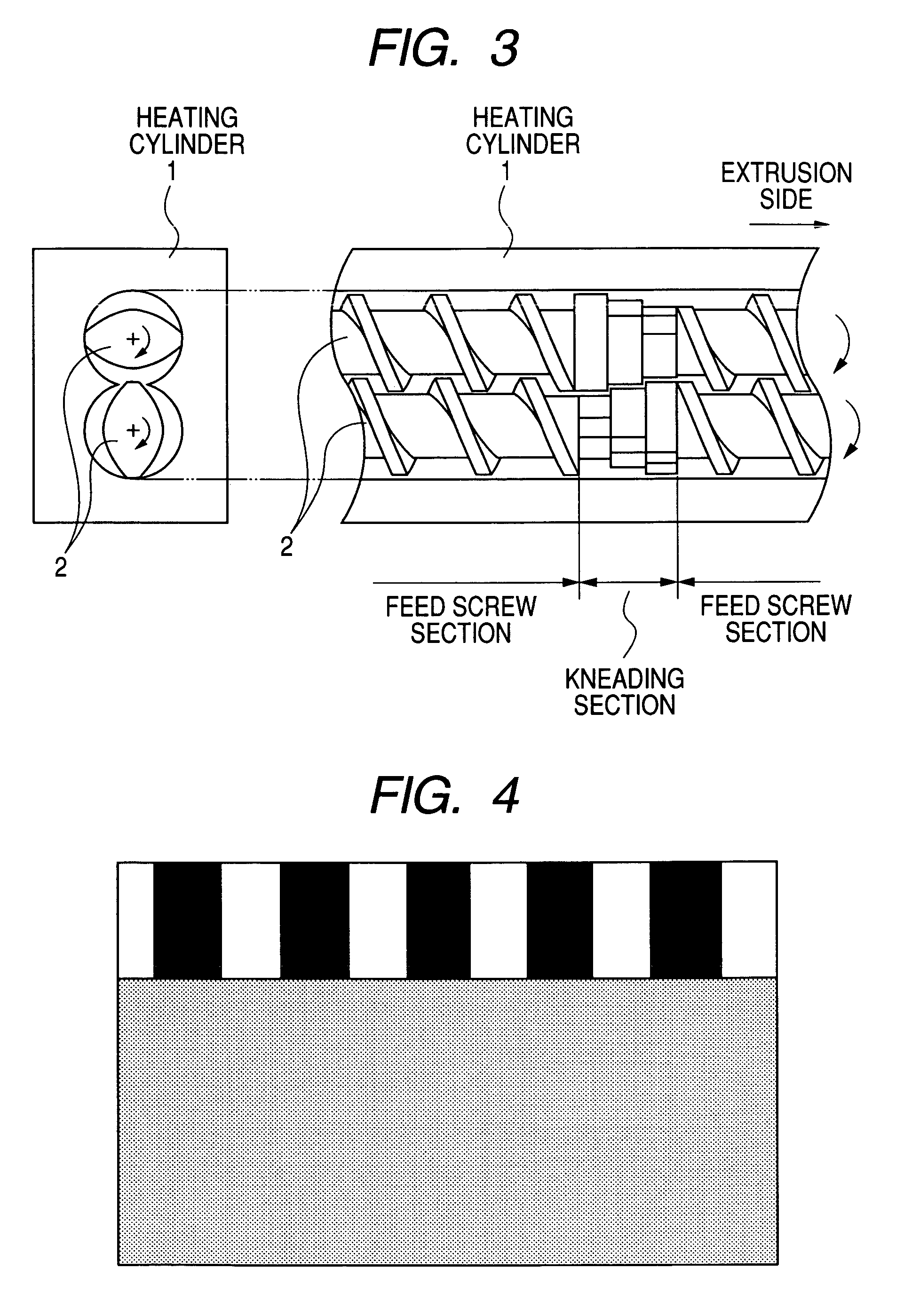Toner
a technology of toner and nozzle, applied in the field of toner, can solve the problems of affecting the mechanical strength of toner is apt to decrease, and the contamination of the fixing-receiving sheet by the offset phenomenon, and achieves the effects of improving the performance of toner, and improving the durability of toner
- Summary
- Abstract
- Description
- Claims
- Application Information
AI Technical Summary
Benefits of technology
Problems solved by technology
Method used
Image
Examples
examples
[0325]The fundamental constitution and characteristic features of the present invention have been described above. In the following, the present invention is described in greater detail by giving Examples. However, they should not be construed to limit embodiments of the present invention.
[0326]Waxes (a) and (b) used in Examples and Comparative Example are shown in Tables 1 and 2. Resin production processes are shown below. The results of measurement by DSC of the wax (a) are shown in FIG. 1.
Production Example A-1 of High-Molecular Weight Component
[0327]
(by weight)Styrene80.0partsn-Butyl acrylate18.0partsMethacrylic acid2.0parts2,2-Bis(4,4-di-t-butylperoxycyclohexyl)propane0.8part
[0328]In a four-necked flask, while stirring 200 parts by weight of xylene, the inside of the container was sufficiently displaced with nitrogen and was heated to 120° C., and thereafter the above materials were dropwise added over a period of 4 hours. Further, with retention for 10 hours under reflux of xy...
production example b-1
of Vinyl Resin Having Carboxyl Group
[0330]
(by weight)High-Molecular Weight Component A-130partsStyrene56.5partsn-Butyl acrylate12.8partsMethacrylic acid0.7partDi-tert-butyl peroxide1.4parts
[0331]200 parts by weight of xylene was introduced into an autoclave, and nitrogen gas was fed into it to sufficiently carry out deaeration. Next, this vessel was sealed, followed by heating to 200° C. Keeping this temperature, among materials in the above formulation, compounds other than High-Molecular Weight Component A-1 were dropwise added into the xylene over a period of 4 hours. Further, with retention under reflux of xylene for 1 hour, polymerization was completed. Then, High-Molecular Weight Component A-1 was added to the xylene solution, and these were thoroughly mixed to prepare a resin solution containing Resin B-1. Physical properties of Resin B-1 are shown in Table 4.
production examples b-2
to B-5 of Vinyl Resin Having Carboxyl Group
[0332]Resin solutions containing respectively Resins B-2 to B-5 were obtained in the same manner as in Production Example B-1 except that in Production Example B-1 the formulation was changed as shown in Table 4. Physical properties of Resins B-2 to B-5 are shown in Table 4.
PUM
| Property | Measurement | Unit |
|---|---|---|
| viscosity | aaaaa | aaaaa |
| temperature | aaaaa | aaaaa |
| temperature | aaaaa | aaaaa |
Abstract
Description
Claims
Application Information
 Login to View More
Login to View More - R&D
- Intellectual Property
- Life Sciences
- Materials
- Tech Scout
- Unparalleled Data Quality
- Higher Quality Content
- 60% Fewer Hallucinations
Browse by: Latest US Patents, China's latest patents, Technical Efficacy Thesaurus, Application Domain, Technology Topic, Popular Technical Reports.
© 2025 PatSnap. All rights reserved.Legal|Privacy policy|Modern Slavery Act Transparency Statement|Sitemap|About US| Contact US: help@patsnap.com



